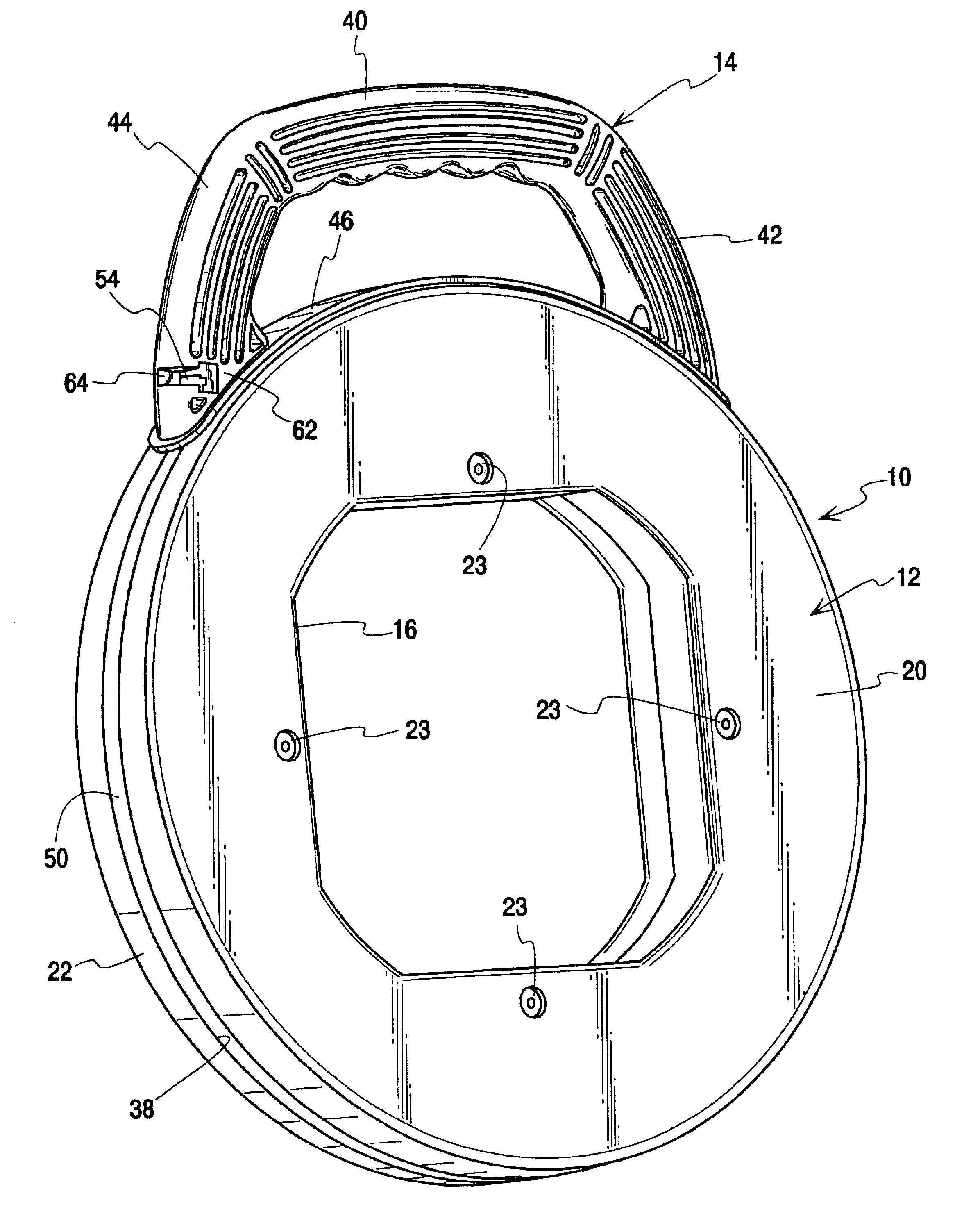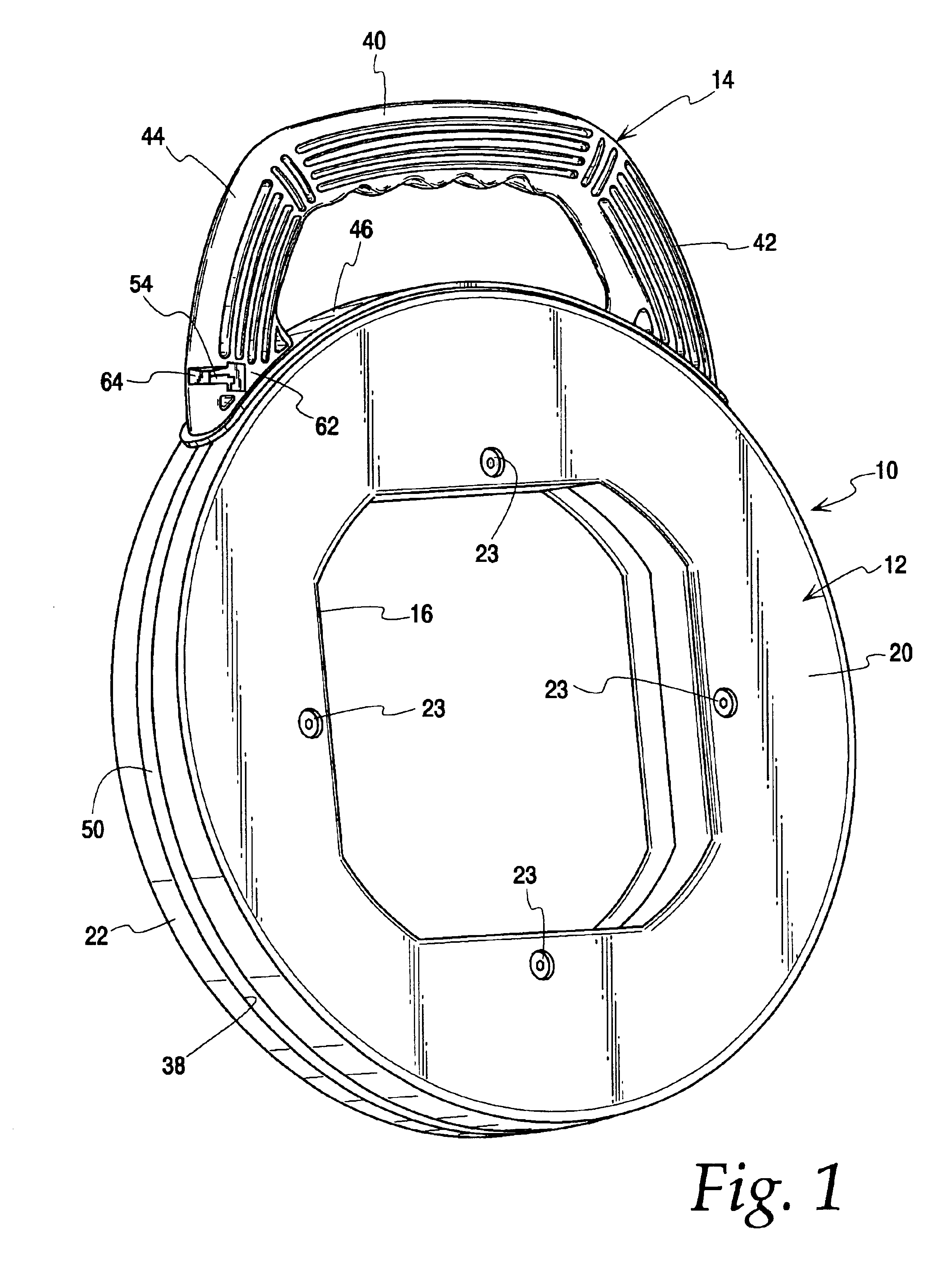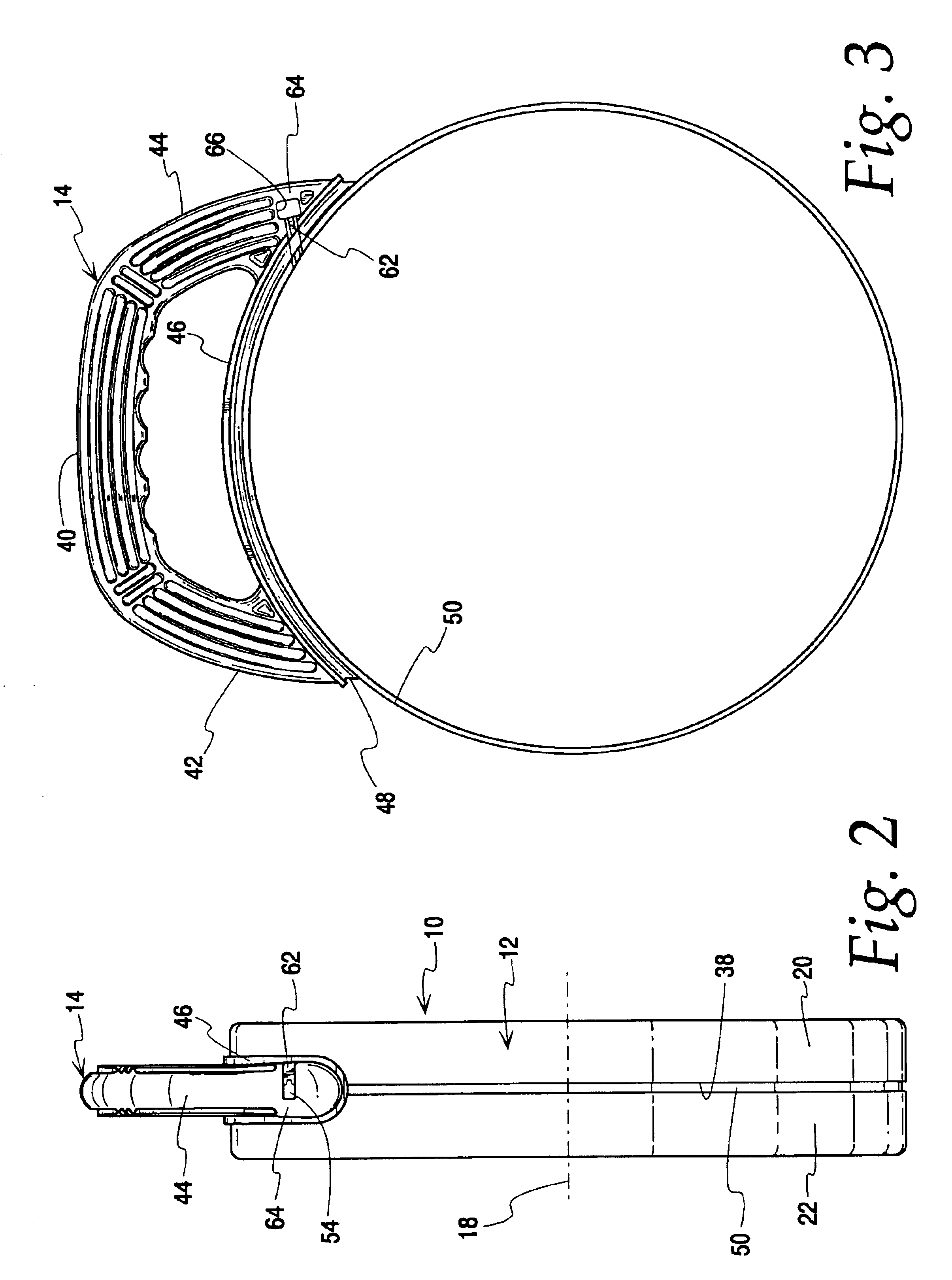Fish tape handle with retention feature
a technology of tape handle and fish, which is applied in the direction of cables, take-up reel/drum arrangements, cables laying apparatus, etc., can solve the problems of tape “springing out” of the case or the handle, unintentional separation of the case, and unfavorable users, etc., to achieve the effect of improving the handle design
- Summary
- Abstract
- Description
- Claims
- Application Information
AI Technical Summary
Benefits of technology
Problems solved by technology
Method used
Image
Examples
Embodiment Construction
[0017]The fish tape assembly of the present invention is shown generally at 10 in FIGS. 1 and 2. The fish tape assembly 10 includes a generally circular case 12 and a handle 14. The case has a central opening 16 and defines an axis 18. The case 12 is made of first and second case halves 20 and 22. The case may be made of ABS, although other materials are possible. The halves are held together by four screws, shown schematically at 23, which extend through screw holes in one case half and into mounting posts in the other. For reference purposes the face of the fish tape assembly seen in FIG. 1 will be considered the front of the assembly.
[0018]Preferably the halves are identical so only half 20 will be described in connection with FIGS. 8 and 9. Like parts will be given like reference numerals in the two halves. The case half includes a radial wall 24 in the shape of a flat ring. An outer annular half wall 26 is attached to the outside edge of the radial wall 24. The annular half wal...
PUM
 Login to View More
Login to View More Abstract
Description
Claims
Application Information
 Login to View More
Login to View More - R&D
- Intellectual Property
- Life Sciences
- Materials
- Tech Scout
- Unparalleled Data Quality
- Higher Quality Content
- 60% Fewer Hallucinations
Browse by: Latest US Patents, China's latest patents, Technical Efficacy Thesaurus, Application Domain, Technology Topic, Popular Technical Reports.
© 2025 PatSnap. All rights reserved.Legal|Privacy policy|Modern Slavery Act Transparency Statement|Sitemap|About US| Contact US: help@patsnap.com



